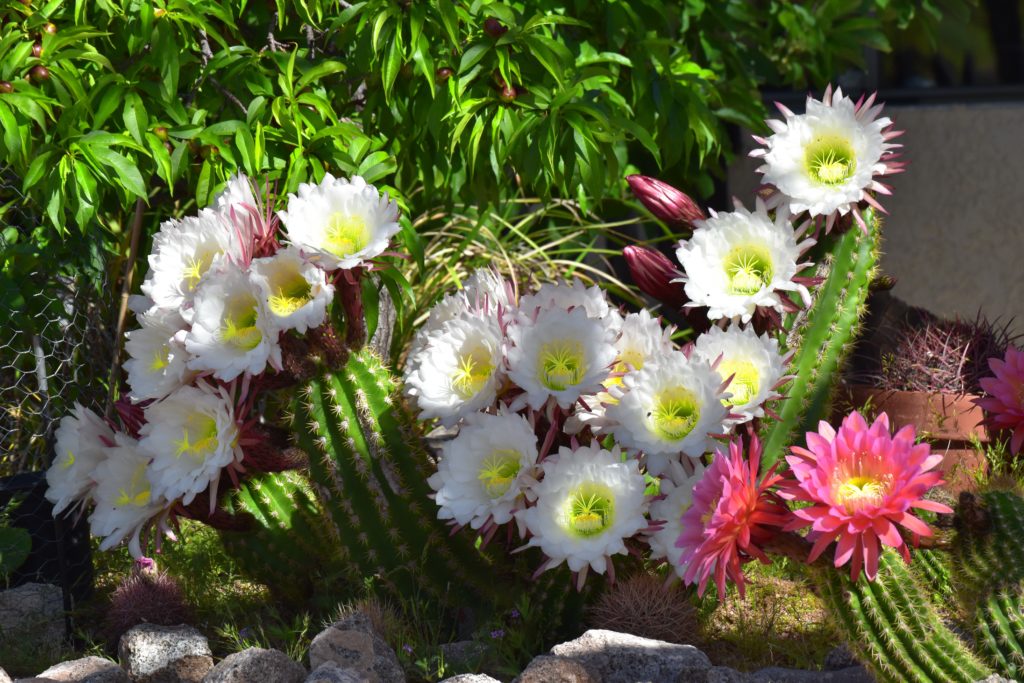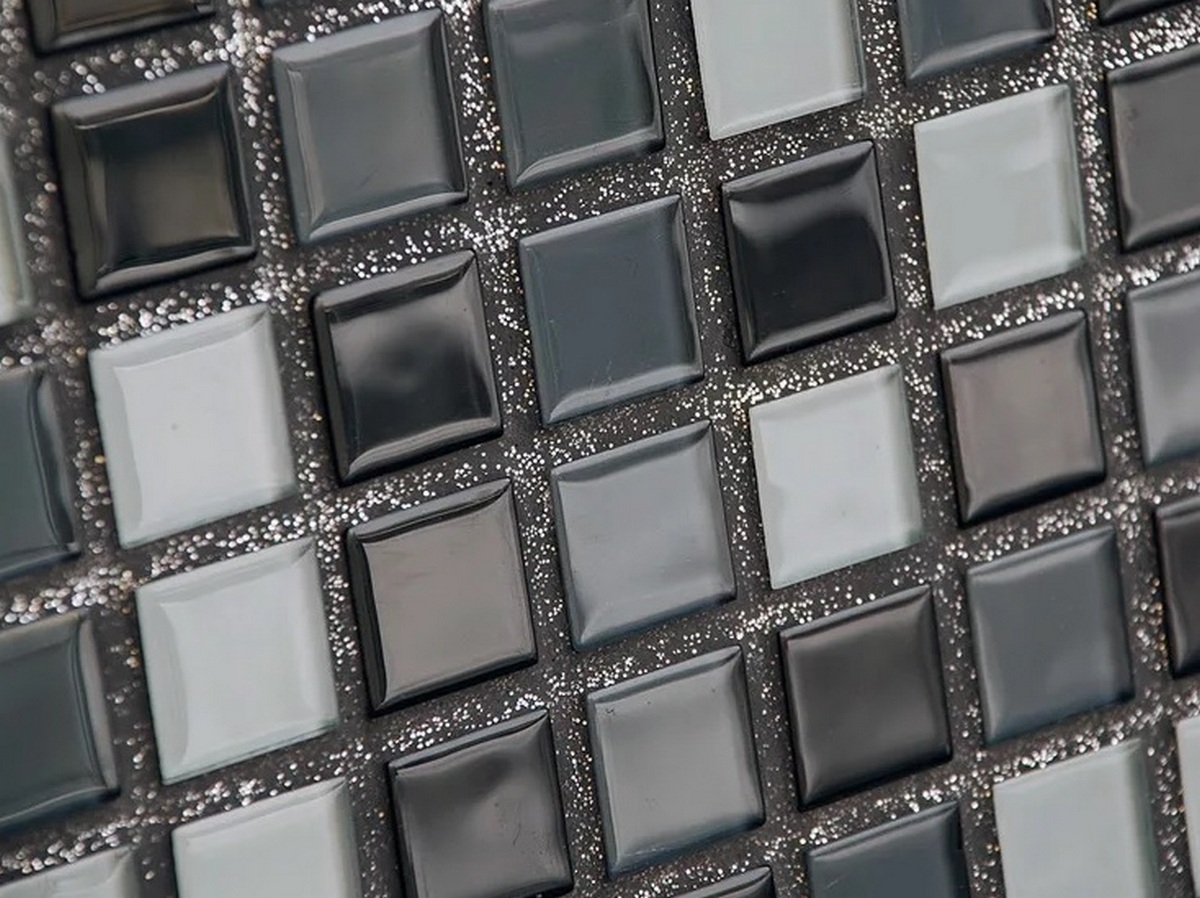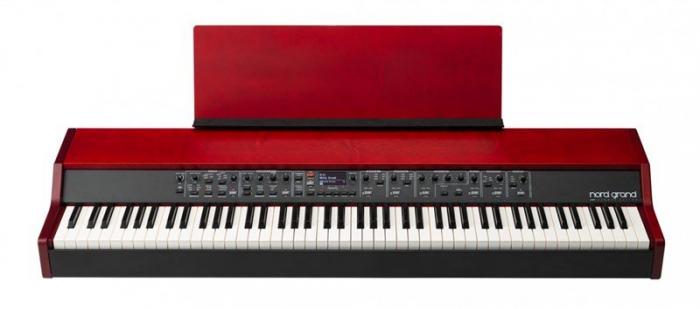Rating of the most beautiful indoor flowers for 2022
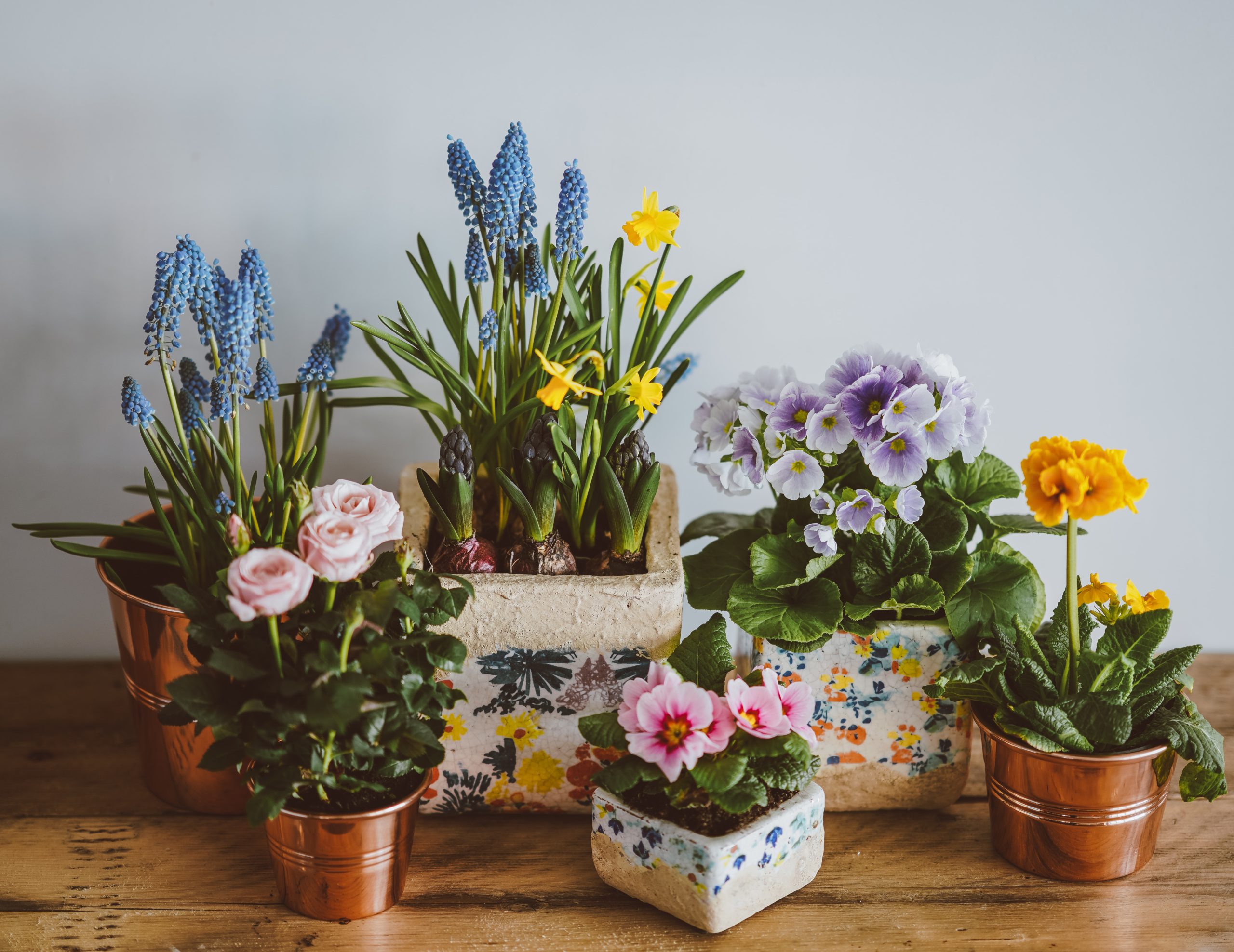
At the moment, you can find a lot of decorative varieties of indoor flowers that differ in shape, size or color. In this review, we will learn how to choose them, consider the most attractive room options that can be found in the online store and not only.
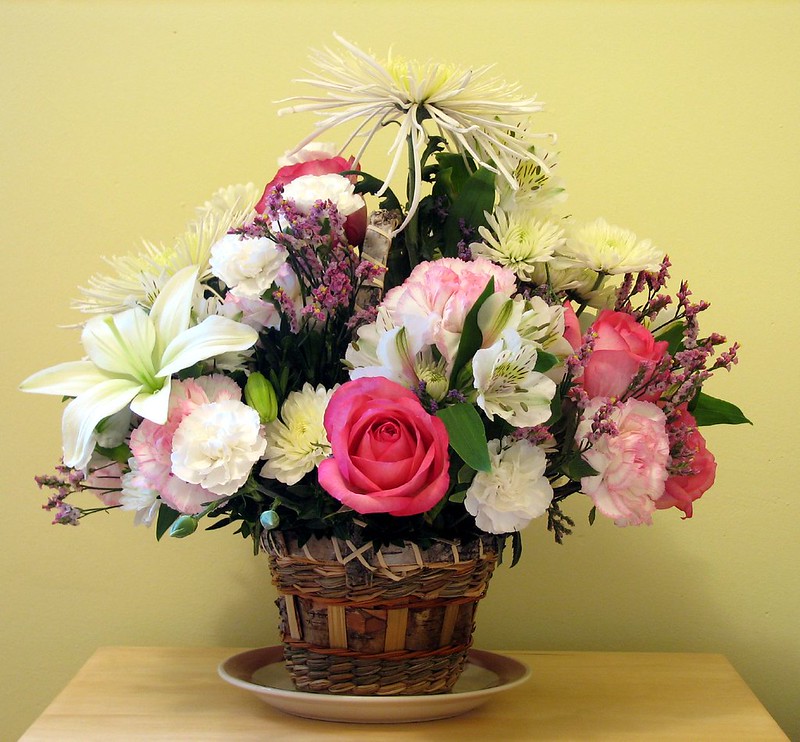
Content
A few words about them
All that are, domesticated varieties can be attributed to the evergreen representatives of the flora. These beauties are actively used in ornamental gardening, not only serving as an important part of modern interiors, but also having a beneficial effect on the microclimate. All rooms are conditionally divided:
- those that delight the eye with their blooming buds;
- just with beautiful leaves, but without bright inflorescences.
Naturally, those representatives of the flora that never cease to delight others with flowering have become the most beloved.
By 2022, they are usually divided according to the following characteristics.
- Decorative flowering - a large subgroup. It also includes exotic options brought from other countries, but adapted to our latitudes. As a rule, they are distinguished not only by their appearance, but also by the flowering period and aroma.
- Potted. They can grow both in a dwelling and in a flower bed. Such flowers are used "as needed", that is, most often they can be found in the composition.
- Decorative leafy. These include ferns, palm trees, climbing plants. The main difference between the subgroup is the complete absence of buds.
In a separate class allocate
- cacti and succulents - this category includes representatives of a non-standard appearance, often completely without leaves or branches in the usual sense.
- decorative fruit - represent a small group of small plantations intended for growing in the house.
There is another way to divide green friends - according to growing conditions.
- moisture-loving;
- drought resistant;
- thermophilic;
- Cold resistant;
- Those who love to be in the light;
- Shade-loving.
Content Nuances
Their place in the house
According to buyers, representatives of the flora will please the eye longer if they are properly cared for, as well as protected from parasites. Therefore, before settling a new flower in your home, it would be useful to read the reviews of experienced growers. First of all, room options need light. Therefore, the window is considered the best place to place them. But not every representative of the green world will be happy with direct sunlight from the south side. For example, categories with bright petals need ample light, while their counterparts with leathery foliage are less demanding. Based on what, preference is given to the east or west side. Equally important is the design of the windows themselves. In modern dwellings, radiators are usually installed under the windowsill, which makes them not only bright, but also dry and warm. Nevertheless, window stands, even those made of natural materials, are the most unfavorable places. In this case, the flowerpots must be regularly kept in a waterproof pan to avoid the appearance of wet circles. Such climatic differences are not suitable for everyone, so you need to monitor the atmosphere in the room.
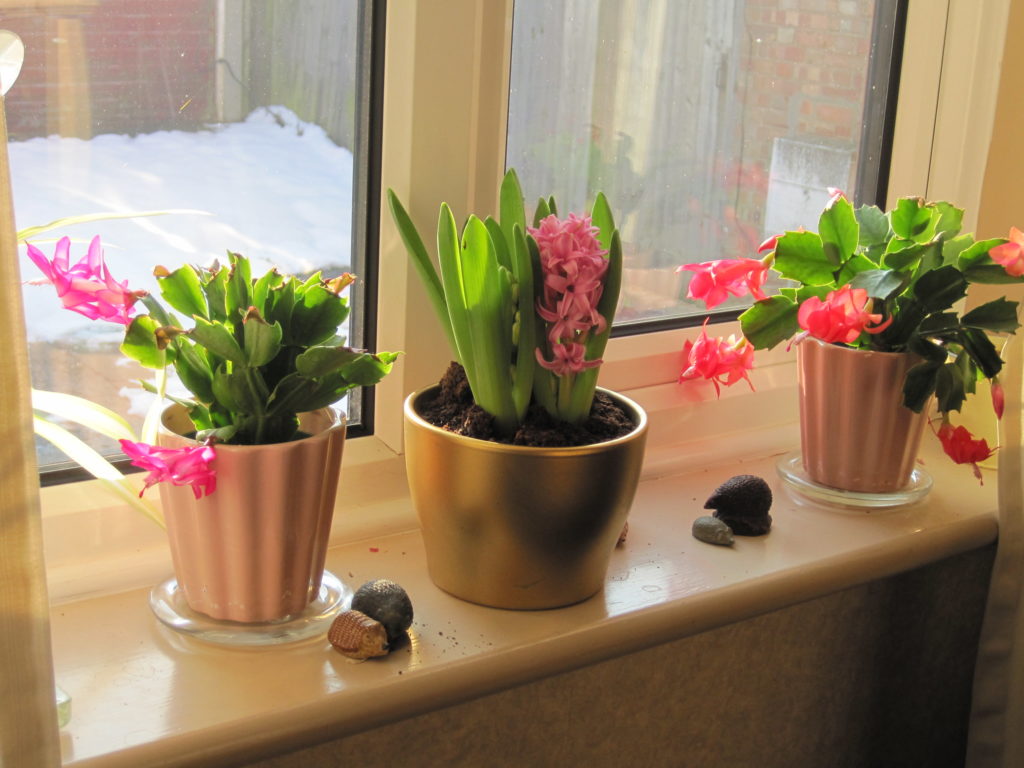
Features of humidity and temperature
Speaking of such an important event as watering flowering beauties, the first thing you should pay attention to is that not all green pets take it the same way. For example, dry-tolerant aloe or cactus do not need intensive watering. But inflorescences with large, abundantly moisture-giving leaves, on the contrary, will be happy with good irrigation.Representatives such as Calla will grow well, even if you lower it directly into the liquid.
Water for irrigation should be moderately warm and soft (rain or river). Artificially heated liquid is not suitable for this, the method often causes such a disadvantage as the rapid development of a seedling. In the atmosphere of a city apartment, it is recommended to withstand moisture for three days. If, nevertheless, watering was plentiful, then excess water exits through the drainage system. Such residues must be removed. Significantly simplify the event, the use of hydroculture. In this case, the action can be carried out directly through the pebbles, while the flowerpots themselves will not constantly be in contact with moisture, and the rhizomes can easily get the water they need. This will increase the humidity in the room. But temperature preferences, according to external data, are no longer so easy to accurately determine. This applies even to species from the same family, since all "green" are very individual. In general, one can distinguish the most comfortable temperature up to +18 +20° in winter and almost +22 +24° in summer. As a rule, the mode can fluctuate depending on the species.
Tips for beginners
- Before buying a new window occupant, inquire about their temperature and light preferences. For each individual species, tuck small clues on a plastic plate.
- You should not feed your pet while it is at rest, recently acquired or dived, as well as bringing it into overdried soil.
- If you have to use air conditioning, you need to remember that the technique dries the air very much, and your pets will need regular spraying.
- The room with green pets should be ventilated frequently, however, it is important to avoid getting a direct stream of cold air on them, this can lead to the death of the latter. Well, in the summer, you can even move it to a balcony or terrace.
- Dive is best done only when necessary, that is, when the root system completely fills the entire container.
- Green pet hygiene involves the removal of withered stems and leaves. This procedure, although it seems quite ordinary, is of great importance, since most often it is there that pathogenic bacteria appear. It is better to cut off the damaged foliage at the junction of the cutting and the stem.
- The best picking seasons for indoor plantings are spring or early summer. But less demanding specimens perceive the transplant well even during the year.
Popular models of flower pots
As for the criteria for choosing a container where green pets will grow, the requirements are approximately the same. The main thing is the comfortable well-being of the latter, while the materials can be very different:
- Baked clay - this material is quite stable, creating the most comfortable conditions for the rhizome. And covered with glaze, it also looks very beautiful. However, for the price, such forms are by no means a cheap pleasure.
- Wood - these containers are very unusual, they create favorable conditions for the growth of roots, but such pots are short-lived and expensive.
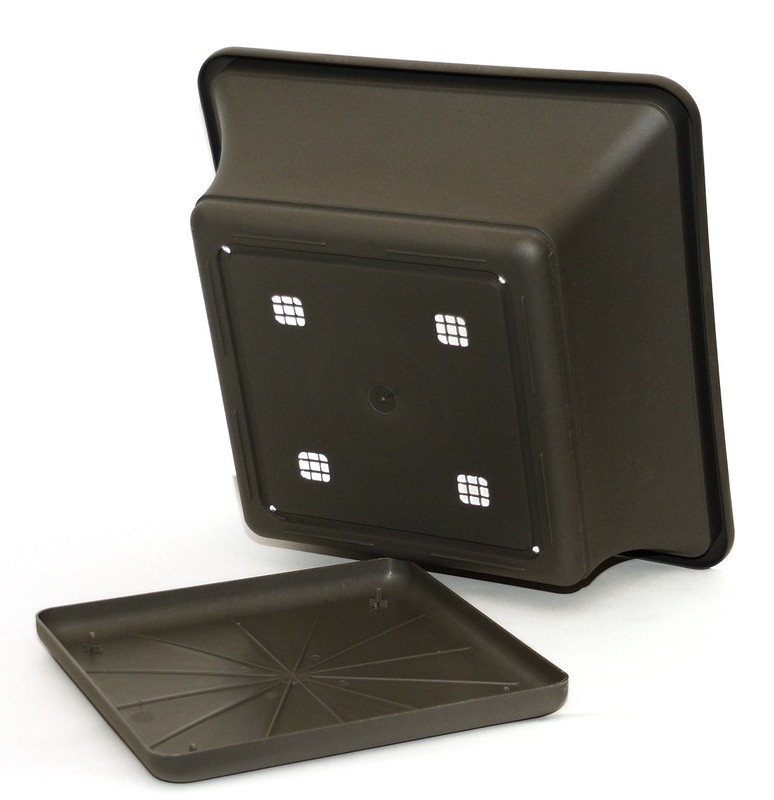
- Plastic - they no longer look so elegant, are light in weight and can be knocked over jokingly, such pots quickly become unusable, but create a favorable atmosphere for the development of the root system.
- Metal products are not suitable for cultivation at all, because they instantly heat up or supercool, and their cost and durability leave much to be desired.
Therefore, preference is given to products made from natural materials. The shape of the container is also important - a truncated cone or pyramid is considered the best model. The volume of the container must match the width of the growth of the root system. It is important to choose pots of 0.5-1.5 liters and it is best with a pallet of the same composition.
Inexpensive but original options
Kaleria
This beauty won the attention of bells with a light fluff surrounding her non-standard form. It is also present on the foliage and stem itself, making them appear to be made from a piece of velvet. Increasing in length, the shoots gradually lie down. Kaleria has a lot of different types, however, in an apartment you can find the following:
- Fluffy. Has rich green leaves with a reddish pile. The buds are bright red or yellow with specks along the edges.
- Coloria Linden. Only the shoots have fluff, and the back of the leaf is silvery.
- Uneven. A small plant with a sparse edge and bright orange stripes.
- Digitalis - inflorescences look like a bell with a large fold along the edge. The plant itself is completely covered with whitish villi.
- Pleasant - has bright reddish streaks.
Features of plant care - in the video:
- beautiful appearance;
- undemanding in care;
- lots of shades.
- The buds are gaining reluctantly.
| lighting | penumbra |
|---|---|
| watering | doesn't like spraying |
| air humidity | big |
| flowering time | late May - mid October |
| soil feature | nutritious with low acidity |
| height | 30-50 centimeters |
| reproduction | cuttings |
| life expectancy | perennial |
| average price | 500 |
Hibiscus
This undemanding representative of its class has bright flowers with a rich palette, often found in the homes of ordinary citizens and public places. The most popular subspecies are the following:
- Syrian. This type, which has long been chosen by flower growers in Russia, as the plant stands out for its unpretentiousness and easily adapts to different conditions. Outwardly, it looks like a mallow.
- Dissected-petal. It resembles a plant from the order of shrubs. The main characteristic of the subspecies is its rather long flowering, as well as the unusual shape of the buds.
- Chinese rose. The most famous type of hibiscus. It impresses not only with its very large dimensions, but also with its decorative effect. It has lush buds of a ruby hue, remotely similar to a rose flower.
The copy itself is very unpretentious, which means that when choosing the latter, you can completely rely on your own taste preferences.
Video tips for growing hibiscus at home:
- Has good immunity;
- bright;
- does not need special care;
- will fit into any interior.
- During the growth stage, frequent feeding is needed;
- requires shaping and trimming.
| lighting | bright |
|---|---|
| watering | abundant |
| air humidity | moderate |
| flowering time | from early spring to autumn |
| soil feature | mixture of turf, peat and river sand |
| height | 1.5-2m |
| reproduction | cutting |
| life expectancy | perennial |
| average price | 800 |
Begonia
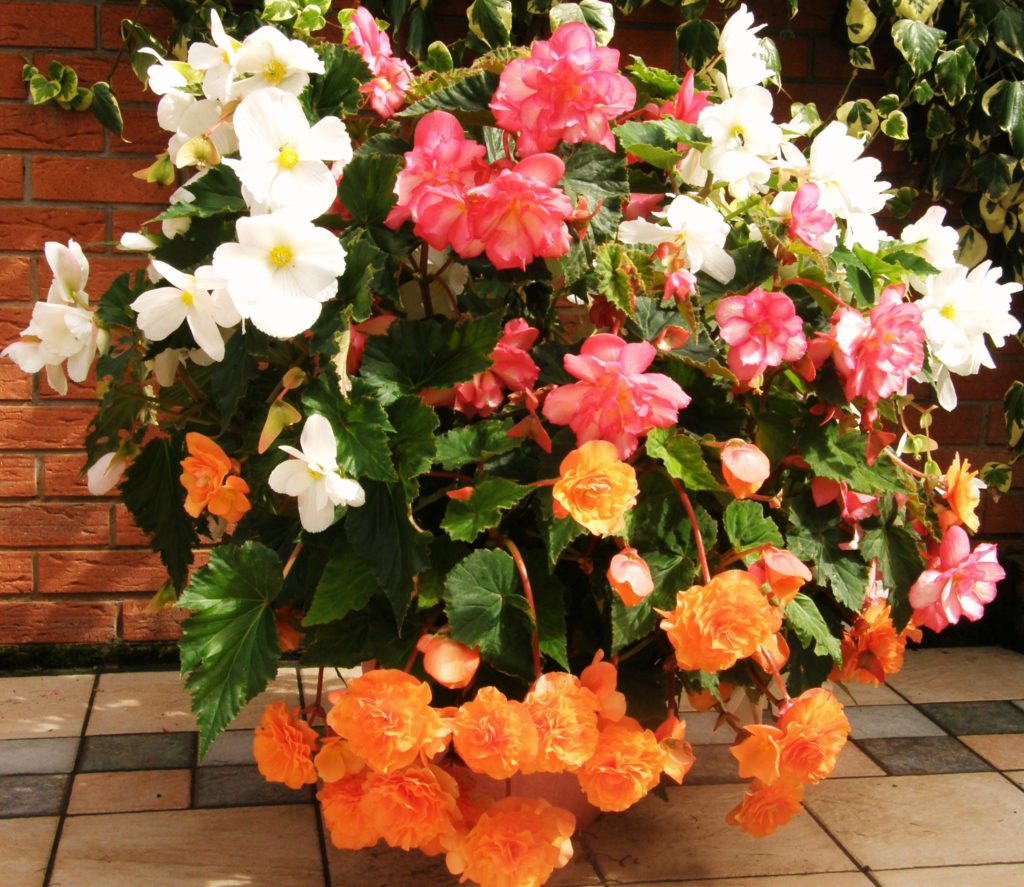
Recognized as one of the most beautiful among the representatives of the room. The green yoke is distinguished by characteristic asymmetrical leaves, it can be:
- whole;
- dissected.
At the edges, they are most often wavy or jagged.The flower has a reddish, burgundy-violet or brownish tint to the back of the leaf. The stems of most begonias are covered with fine pile.
Video tips for the care and cultivation of begonias:
- Well perceives temperature fluctuations;
- in summer it can be taken out to the terrace for a full day;
- bright, beautiful buds;
- variety of colors;
- looks good in a wall planter;
- inexpensive;
- may be high or low.
- Capricious;
- almost no smell.
| lighting | loves bright but diffused light |
|---|---|
| watering | regular |
| air humidity | moderate |
| flowering time | late spring - mid-autumn |
| soil feature | mix for begonias |
| height | about 3 centimeters |
| reproduction | cuttings - pinching |
| life expectancy | 2 -3 years |
| average price | 600 |
Abutilon
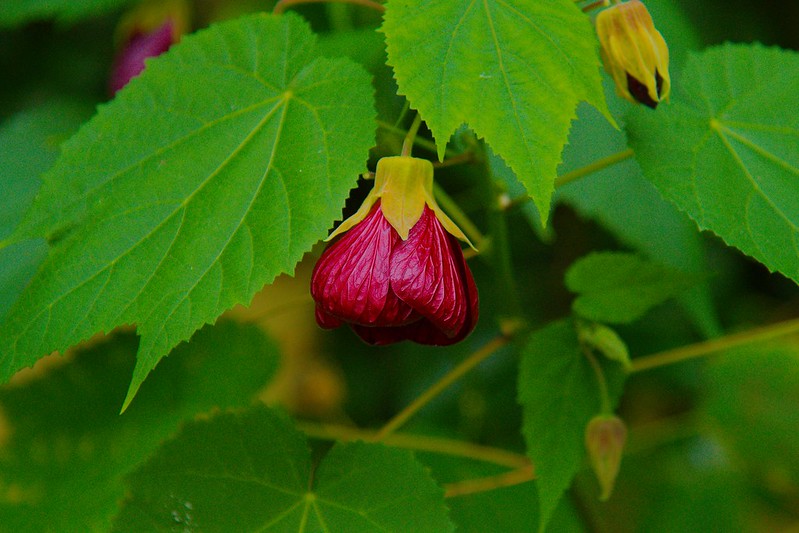
Most often it is referred to as "indoor maple", this variant received such a nickname because of its carved leaves. The bud can have a different shape:
- gently sloping dome;
- open bell;
- funnels;
- wheels.
The terry variety of abutilon has gained great popularity.
Features of growing abutilon - in the video:
- Unpretentious in care;
- likes frequent watering;
- very varied;
- floor placement is possible;
- large color palette;
- there are unusual hybrids.
- Requires an annual dive.
| lighting | photophilous |
|---|---|
| watering | abundant |
| air humidity | moderate |
| flowering time | May to October |
| soil feature | waterproof and breathable |
| height | 1 - 1.5 m |
| reproduction | cuttings or seeds |
| life expectancy | 35 years |
| average price | 900 |
Pelargonium
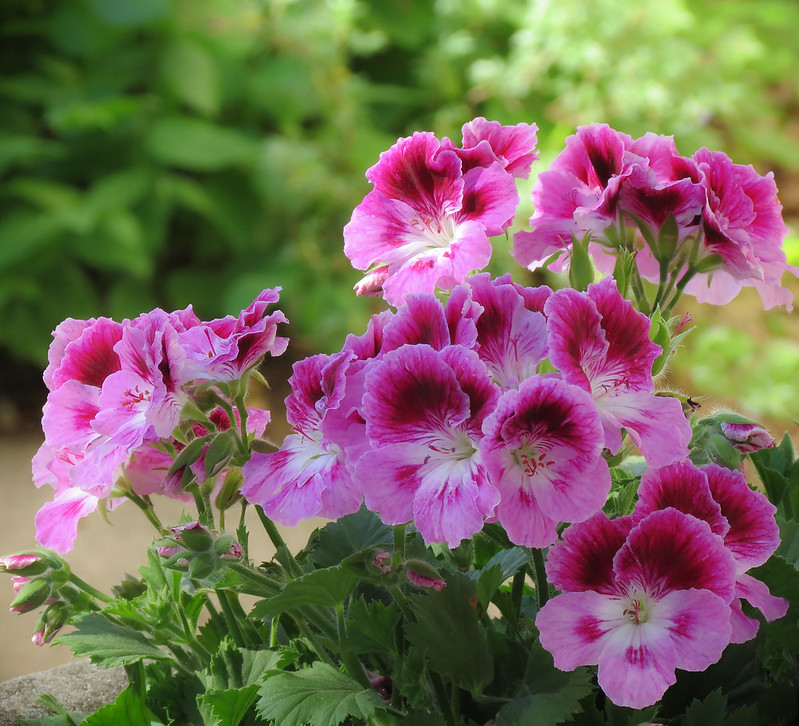
Or the well-known geranium - a popular plant because of its unpretentiousness. She happens:
- bush;
- ampelous.
Pelargonium can have a very different shade from pale pink to bright red or orange. The inflorescences are shaped like an umbrella with small velvety porous leaves. The beauty has straight or creeping stems and is great for vertical gardening, it remains only to determine which one is better to buy.
Pelargonium care features in winter - in the video:
- In the summer, you can take it outside;
- feel good even at very low temperatures;
- there are fragrant varieties.
- Needs regular ventilation.
- no scarlet and blue shades.
| lighting | photophilous |
|---|---|
| watering | normal |
| air humidity | dry |
| flowering time | 20 – 30 days |
| soil feature | fertile with drainage |
| height | from 10 to 80 centimeters |
| reproduction | pinching, seeds, division |
| life expectancy | 25 years |
| average price | 500 |
The most beautiful perennial indoor flowers
streptocarpus
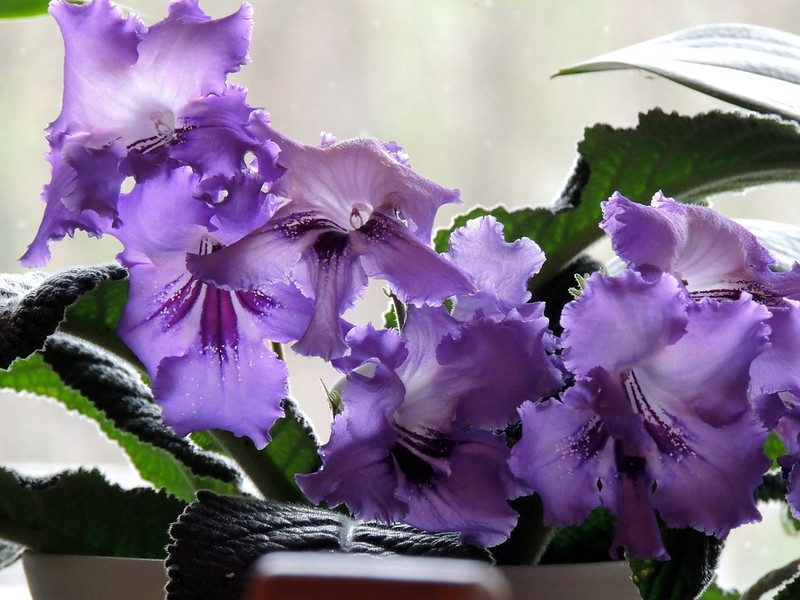
It belongs to creeping variations, has a discreet foliage cover and looks like an ordinary violet, but unlike them, it is resistant, has long, larger petals interspersed. Its characteristic feature is a spiral seed tube. The specimen gained fame due to its long and abundant flowering.
Tips for beginners on growing streptocarpus:
- Long period of activity;
- a large selection of shades;
- many buds;
- with additional lighting, it can delight others throughout the year;
- unpretentious, even room temperature will do.
- Subject to frequent pest attack.
| lighting | suitable southwest window |
|---|---|
| watering | regular |
| air humidity | low |
| flowering time | from the beginning of April to the end of autumn |
| soil feature | loose and light |
| height | no more than 30 centimeters |
| reproduction | by any means other than staking |
| life expectancy | perennial |
| average price | 1000 |
Orchid
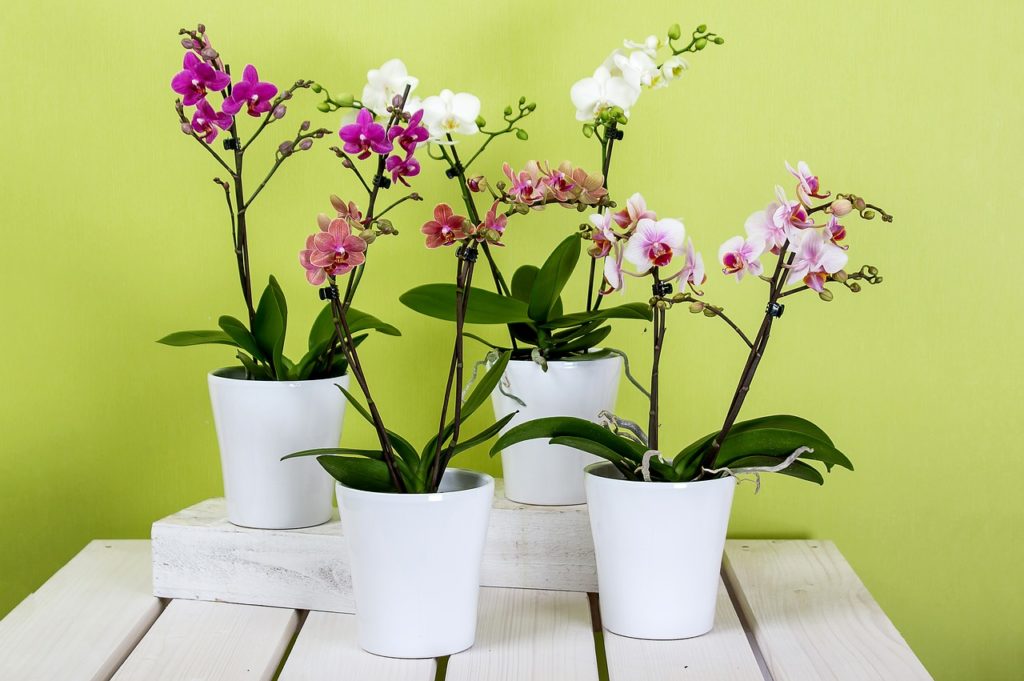
The type of indoor plants is often a pale purple hue, striking in its diversity, although it is considered very demanding. Thanks to hard work, breeders and botanists, this flowering splendor has become widely available to ordinary citizens. The rating of the highest quality apartment dwellers was headed by the following varieties:
- Aerides;
- Angrekum;
- Wanda;
- Dendrobium;
- Miltonia;
- Encyclia.
Indoor orchid has 1 shortened stem, ending in a rosette with dense, fleshy leaves. The relative ease of maintenance has made the following models popular:
- Paphiopedilum;
- Phalaenopsis.
Video on how to transplant a blooming orchid:
- A magnificent plant without a pronounced aroma;
- long pleases the eye with its flowers;
- wide selection of honeycombs and types.
- Very demanding in care;
- it is better to add water under the pot;
- very difficult to reproduce;
- high price.
| lighting | scattered light |
|---|---|
| watering | depends on the type |
| air humidity | determined by variety |
| flowering time | 2 - 6 months |
| soil feature | special blend. |
| height | from 15 centimeters |
| reproduction | seeds or cuttings |
| life expectancy | 5 – 7 years |
| average price | 699 |
Gardenia jasmine
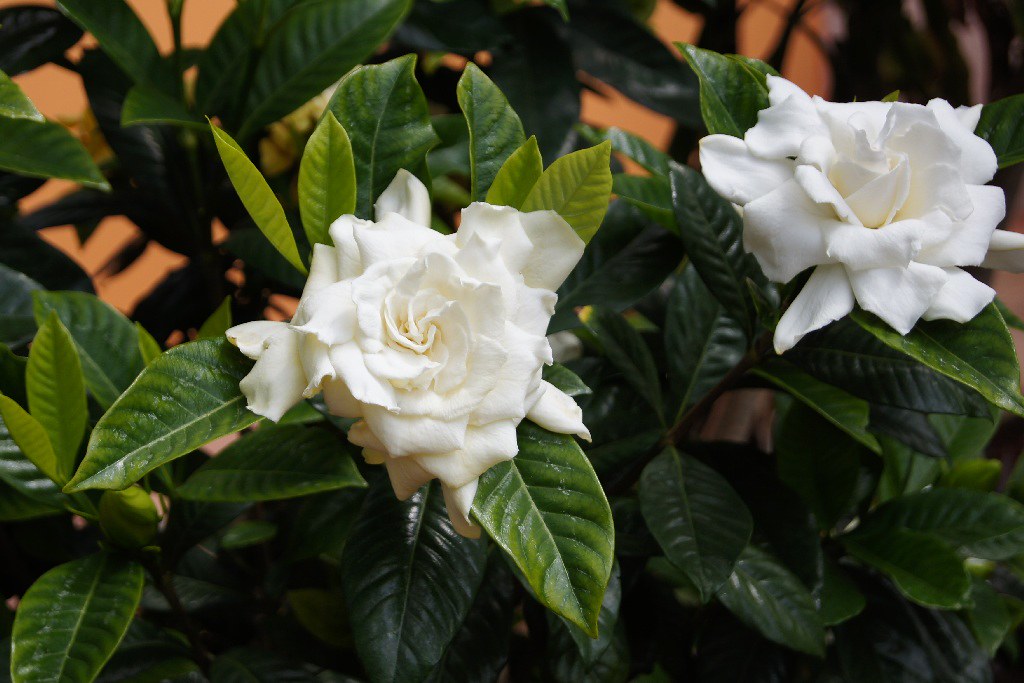
It can also be found under the name - Augusta or Cape jasmine. The plant impresses with its unusual combination of pale cream and white flowers. It has smooth, branched shoots that become woody with age. The foliage is dark green leathery, with a glossy sheen.
About the intricacies of growing at home - in the video:
- It grows well even with a lack of light;
- rich aroma;
- original bloom.
- Hardly endures a temperature difference;
- capricious plant;
- slightly dropping buds.
| lighting | photophilous |
|---|---|
| watering | regular |
| air humidity | big |
| flowering time | May to September |
| soil feature | sour, rich in iron |
| height | 60 - 80 centimeters |
| reproduction | cuttings |
| life expectancy | 10 years |
| average price | 1000 |
indoor roses
As a rule, it has the form of a small bush and a rich aroma. If the plant is properly cared for, the rosette will bloom throughout the year with minimal respite. Meanwhile, not all varieties are optimal for a home greenhouse. These flowers have been selected for more than one year, so when choosing a plant, you need to focus not only on the parameters, but also on the maintenance requirements.
Video tips for growing indoor roses:
- Compact;
- used to make table flower arrangements;
- used in cooking and winemaking;
- Growing reluctantly;
- quite low;
- a number of varieties have specific preferences.
- fastidious.
| lighting | photophilous |
|---|---|
| watering | moderate |
| air humidity | do not overdry |
| flowering time | 2 months |
| soil feature | special substrate |
| height | 15 centimeters |
| reproduction | cuttings |
| life expectancy | perennial |
| average price | 1200 |
Climbing plant rating
tricolor morning glory
We are used to seeing her in the garden blooming for only a year, but having moved home, she successfully performs the functionality of a perennial with intensely colored petals. There are about 500 types in total, but only 25 are suitable for the Russian climate.The foliage of the plant can have a different color and shape, starting from the variety, there are also variegated subspecies.
Video about the features of growing a plant:
- The plant is quite unpretentious;
- flowers can reach a diameter of 9 centimeters;
- well survives the lack of light or moisture.
- Requires support.
| lighting | bright diffuse |
|---|---|
| watering | moderate |
| air humidity | low |
| flowering time | summer autumn |
| soil feature | slightly sour |
| height | 45-60 centimeters |
| reproduction | vegetative |
| life expectancy | year |
| average price | 200 |
Decembrist
He is a Christmas tree or Schlumberg's zygocactus, belongs to the family of the latter, although it is considered "wrong". This is an ampelous plant that completely lacks thorns, it loves water and cannot stand direct sunlight, and in the absence of watering it refuses to bloom at all. Experienced plant growers argue that the content of the flower is more like the everyday life of its overseas relative, the orchid, than behind the cactus. It has non-standard segmented leaves and is quite common in homes.
Details about the cultivation of the Decembrist - in the video:
- Positively affects the atmosphere in the room;
- can be planted on the street;
- unpretentious.
- Not active every year.
- demanding on watering and lighting.
| lighting | bright diffuse |
|---|---|
| watering | moderate |
| air humidity | room |
| flowering time | December - March |
| soil feature | lightweight with good drainage |
| height | from 50 centimeters |
| reproduction | cuttings |
| life expectancy | up to 20 years |
| average price | 900 |
Glariosa
A real queen among flowering vines. Among home crops, the following types are most popular, differing in appearance:
- Rothschild flower - has very large parameters;
- Gloriosa Luxurious - has yellowish petals and looks like the famous Chinese lantern;
- Carsoni - This variety is rather stocky with a chocolate purple center halo and lemon yellow tips.
Plant video:
- Flowers have an unusual shape;
- promotes the development of fantasy;
- with recovery function.
- The plant is poisonous;
- needs a period of rest;
- the shoots are pretty fragile.
| lighting | bright |
|---|---|
| watering | moderate |
| air humidity | small |
| flowering time | summer autumn |
| soil feature | organics with leaf humus and drainage |
| height | from 1.5 – 2 m |
| reproduction | seeds - tubers |
| life expectancy | perennial |
| average price | 800 |
Beautiful and unusual, up to 5000 rubles
Fuchsia
Or an elf flower - also known as a ballerina or a Japanese lantern. This plant is easy to grow in the house on the window. The shade of the foliage varies from green to reddish. Fuchsia has rather flexible stems, which is why it can be attributed to both bush and creeping plants. The flower itself is located on thin pedicels, and their shade depends on the variety. Petals are smooth or double. The leaves may also differ in shape depending on the variety. A peculiar highlight was the elongated, bright stamens protruding from the flower cup, as well as the dense, brightly colored pistil towering above them.
How to care for fuchsia at home - in the video:
- In the summer, you can take the plant to a country house or move it to a container;
- bright color;
- variety of varieties.
- Attracts pests;
- requires specialized knowledge.
| lighting | in a sunny place |
|---|---|
| watering | moderate |
| air humidity | low |
| flowering time | May June |
| soil feature | special blend |
| height | about 50 centimeters |
| reproduction | cuttings |
| life expectancy | annual |
| average price | 5000 |
Azalea bonsai
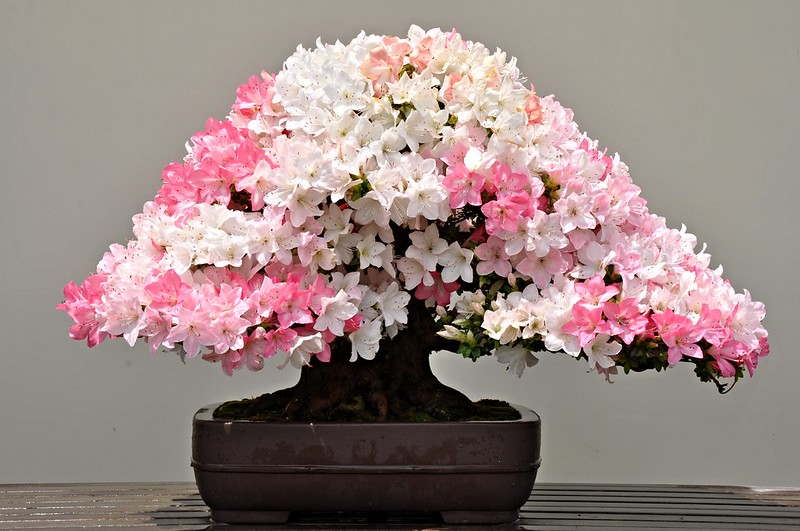
The real queen of the home collection, there are quite a few varieties of this plant, which complicates their classification. For growing at home, it is better to take an Indian azalea. The beauty is very capricious, however, she is very popular, despite how much this beauty can cost. Well, with the popularization of the Japanese trend, even such novelties as the azalea, made in the style of a miniature tree, appeared.
Azalea care secrets - in the video:
- It tolerates pruning well;
- beautiful;
- many kinds;
- abundant flowering.
- Requires frequent transplant;
- capricious;
- difficult to grow.
| lighting | in a sunny place |
|---|---|
| watering | moderate |
| air humidity | low |
| flowering time | May June |
| soil feature | special blend |
| height | about 50 centimeters |
| reproduction | cuttings |
| life expectancy | annual |
| average price | 5000 |
Anthurium
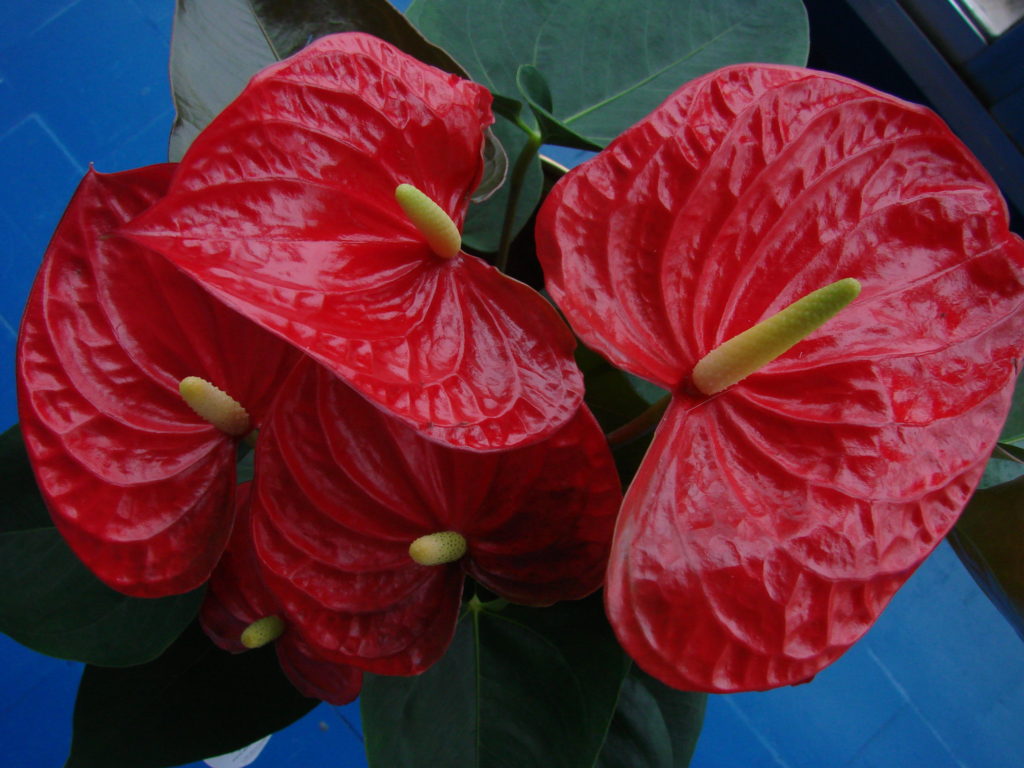
Also popularly known as a male flower, it is distinguished by a bright red heart-shaped bud. In 2022, you can easily find subspecies that are excellent in their tone, but the most popular, as before, is the type with a burning scarlet tint. The plant has a rather peculiar appearance, giving the impression of a flower covered with wax. More famous species from the best manufacturers include:
- Andre;
- Crystal;
- Scherzer.
All about growing anthurium - in the video:
- Beautiful flower;
- unusual appearance.
- Contains poison;
- considered very pampered;
- need an annual transplant.
| lighting | bright diffuse |
|---|---|
| watering | abundant |
| air humidity | high |
| flowering time | February to November |
| soil feature | loosening, preferably peat or sod |
| height | up to 70 centimeters |
| reproduction | cuttings, seeds or division |
| life expectancy | biennial |
| average price | 2000 |
Selenicereus
An unpretentious plant is able to regularly and for a long time please its owner with large flowers, unlike a number of other representatives of the species. Its main advantage was that it fully opens only at night, but during the day it hides again, forming peculiar lumps on the surface. Because of this feature, the cactus received the second name "queen of the night." Another unusual property of it was the device of the ovary.
Plant video:
- variety of species;
- non-standard form;
- big buds.
- Creeping selenicereus looks good in hanging planters;
- Requires proper care.
| lighting | a lot of light |
|---|---|
| watering | limited |
| air humidity | room |
| flowering time | May June |
| soil feature | fertile, using sand or peat |
| height | 5 – 12 m |
| reproduction | seeds, but better cuttings |
| life expectancy | perennial |
| average price | 300 |
Concluding the review, we can conclude that each flower is beautiful and unusual in its own way. And when choosing a plant for a home greenhouse, all descriptions should be taken into account, since today on the Internet you can order online even budget seeds from 30 rubles. It remains only to choose which company is better. Well, knowing the basic aspects will help you not make mistakes when choosing.
new entries
Categories
Useful
Popular Articles
-

Top ranking of the best and cheapest scooters up to 50cc in 2022
Views: 131655 -

Rating of the best soundproofing materials for an apartment in 2022
Views: 127696 -

Rating of cheap analogues of expensive medicines for flu and colds for 2022
Views: 124523 -

The best men's sneakers in 2022
Views: 124040 -

The Best Complex Vitamins in 2022
Views: 121944 -

Top ranking of the best smartwatches 2022 - price-quality ratio
Views: 114982 -

The best paint for gray hair - top rating 2022
Views: 113399 -

Ranking of the best wood paints for interior work in 2022
Views: 110323 -

Rating of the best spinning reels in 2022
Views: 105333 -

Ranking of the best sex dolls for men for 2022
Views: 104371 -

Ranking of the best action cameras from China in 2022
Views: 102221 -

The most effective calcium preparations for adults and children in 2022
Views: 102015
